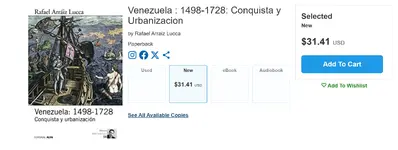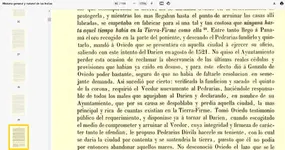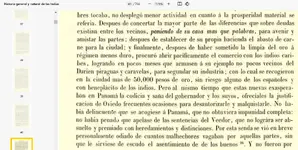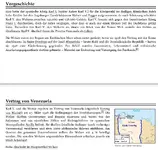As for my initial inquiry - the consensus seems to be that the Spanish melted all of the gold prior to shipment to Spain but the inherent logic on this view ignores the chaotic nature of the period immediately after the conquest and lack of infrastructure. We know they did ship intact gold jewelry and ornaments to the King which was put on display in Seville and Brussels prior to being melted down and made into coins or bars to pay Spain's debts.
Hernán Cortes
Cortes documented his conquest of the Aztec Empire in a series of letters known as the Cartas de Relacion, written to Emperor Charles V between 1519 and 1526. These letters provide detailed accounts of the treasures he encountered and sent back to Spain:
- First Letter (July 10, 1519): Cortés describes the initial gifts from Moctezuma, including "a large wheel of gold" (likely a sun disk) and other gold items like jewelry and ornaments. He lists these among the treasures shipped to Spain via his deputies, Alonso Hernández Puertocarrero and Francisco de Montejo. While this letter inventories the items sent, it doesn’t confirm their condition upon arrival.
- Second Letter (October 30, 1520): Cortés mentions additional treasures taken from Tenochtitlan, including gold objects from Moctezuma’s stores. He notes sending a quinto real (the royal fifth, or 20% of the loot) to Spain, which included gold items like jewelry and decorative pieces. Contemporary accounts, such as Bernal Díaz del Castillo’s The True History of the Conquest of New Spain, corroborate this, describing items like golden collars, bracelets, and feathered ornaments.
However, while these letters prove Cortes shipped gold jewelry and ornaments, many of these items were melted down. For instance, the treasure from 1519 reached Spain and was displayed in Brussels in 1520, where artist Albrecht Dürer marveled at "a whole golden sun" and other "wonderful things." Yet, historical records suggest most were later smelted for coinage or to pay Charles V’s debts, meaning few survived intact.
Francisco Pizarro
Pizarro’s conquest of the Inca Empire similarly involved documented shipments of gold, including jewelry and ornaments, though his illiteracy means we rely on accounts written by others, such as his brother Hernando Pizarro and royal scribes:
- Hernando Pizarro’s Letter (1533): After capturing Atahualpa in 1532, Francisco Pizarro extracted a massive ransom—over 6,000 kg of gold, including jewelry, masks, and sun disks. Hernando Pizarro, tasked with delivering the quinto real to Spain, sailed in 1534 with a shipment valued at over 164,411 gold pesos, plus silver. His reports and the accompanying manifests detail items like "golden seats" and "statues of children," suggesting some ornaments were shipped intact. However, upon arrival in Seville, the Casa de Contratación recorded these treasures, and within a month, most were melted down for their gold content.
- Atahualpa’s Ransom Documentation: Chronicles like those of Pedro Cieza de León and Francisco de Xerez (Pizarro’s secretary) describe the ransom’s composition—vases, jewelry, and ceremonial objects. While these were shipped to Spain, the emphasis was on their gold value, not preservation as artifacts.
Proof of Shipment:
The Cartas de Relación (Cortés) and Hernando Pizarro’s reports, alongside chronicles like Díaz del Castillo’s and Xerez’s, confirm that both conquistadors shipped gold jewelry and ornaments to Spain. Official receipts from the Casa de Contratación in Seville further corroborate arrivals.
Shipments to Spain
Cortés’s conquest of the Aztec Empire (1519–1521) involved multiple shipments of treasure, including jewelry and ornaments, sent to Spain. These were not part of the formalized Flota de Indias (established later in the 16th century) but were carried by individual ships or small groups under his command.
Hernán Cortés
- 1519 Fleet – First Shipment
- Year: Departed July 26, 1519.
- Fleet Details: A single ship, possibly a caravel named Santa María de la Concepción (though names vary in sources), commanded by Alonso Hernández Puertocarrero and Francisco de Montejo.
- Route: Sailed directly from Veracruz, Mexico, across the Gulf of Mexico and the Atlantic to Sanlúcar de Barrameda, Spain. No overland component was needed, as Veracruz was a coastal staging point.
- Cargo: Gold sun disks, jewelry, feathered ornaments, and silver items—Moctezuma’s initial gifts, detailed in Cortés’s First Carta de Relación. This was the quinto real plus extra tribute.
- Arrival: Late 1519 (October or November), with treasures displayed in Valladolid and Brussels (1520) before likely being melted.
- 1521–1522 Fleets – Post-Tenochtitlan Conquest
- Years: Departed late 1521 and throughout 1522.
- Fleet Details: Multiple ships, including one led by Antonio de Quiñones and Alonso de Ávila in 1521, and another under Diego de Camargo in 1522. Exact ship names are often unrecorded.
- Route: From Veracruz across the Atlantic to Seville or Sanlúcar de Barrameda. The treasure was collected from inland Tenochtitlan, moved overland to Veracruz by mule trains and porters, then shipped.
- Cargo: Gold jewelry, collars, bracelets, and ornaments from Moctezuma’s treasury, per the Second Carta de Relación and Bernal Díaz del Castillo’s accounts.
- Arrival: Reached Spain in 1522, logged by the Casa de Contratación, with most gold melted soon after.
Francisco Pizarro
- 1534 Fleet – First Major Shipment
- Year: Departed January 3, 1534, from Nombre de Dios, Panama (Atlantic leg).
- Fleet Details: A small convoy of two or three ships, led by Hernando Pizarro. The flagship might have been the San Miguel or Santa Catalina, though records are inconsistent.
- Route:
- Overland: From Cajamarca to Paita (northern Peru), about 200–300 miles, via mule trains and Inca porters along Andean trails (e.g., parts of the Qhapaq Ñan). This took place in late 1533.
- By Sea (Pacific): From Paita to Panama City, roughly 1,000 miles along the coast, using smaller vessels in late 1533.
- Overland (Isthmus): Across the Isthmus of Panama (50 miles) from Panama City to Nombre de Dios by mule train.
- By Sea (Atlantic): From Nombre de Dios to Seville.
- Cargo: Over 164,411 pesos of gold (6,000+ kg), including jewelry, sun disks, and figurines, plus 3,000+ kg of silver from Atahualpa’s ransom, per Hernando’s reports and Francisco de Xerez’s chronicle.
- Arrival: June 1534 in Seville, where the Casa de Contratación recorded it; most was melted within a month.
- 1534–1535 Fleets – Subsequent Shipments
- Years: Departed late 1534 and 1535 from Panama.
- Fleet Details: Ships like the San Juan or Santa María del Campo, often returning supply vessels under officials like Cristóbal de Mena or Francisco de Bobadilla.
- Route:
- Overland: From inland sites (e.g., Cuzco) to northern ports like Paita, or later Callao, by mule trains.
- By Sea (Pacific): Paita or Callao to Panama City.
- Overland (Isthmus): Panama City to Nombre de Dios.
- By Sea (Atlantic): Nombre de Dios to Seville.
- Cargo: Additional gold ornaments and jewelry from ongoing plunder, per Pedro Cieza de León’s accounts.
- Arrival: Throughout 1535 in Seville, with treasure steadily processed into bullion.
Cortes:
His shipments were straightforward Atlantic voyages from Veracruz, with overland transport limited to getting treasure from Tenochtitlan to the coast. No Pacific or Isthmus logistics were involved.
Pizarro:
The 1534 shipment’s overland leg from Cajamarca to Paita reflects early conquest logistics, before southern ports like Arica or Callao became prominent. Arica wasn’t used here—it was too far south and undeveloped in 1533–1534. The Pacific sea leg to Panama and subsequent Isthmus crossing were critical steps.
Shipwreck:
Cortes:
1521–1522 Shipments
- Fate: Ships like those under Antonio de Quiñones and Alonso de Ávila (1521) and Diego de Camargo (1522) reached Spain, as evidenced by Casa de Contratación records and Cortés’s correspondence. No specific sinking is tied to these primary shipments.
- Possible Losses: Smaller, undocumented vessels carrying supplementary treasure might have been lost. For example:
- 1521 Incident: A ship carrying Cortés’s personal wealth (beyond the quinto real) was reportedly attacked or lost to French pirates, according to some historians like Hugh Thomas (Conquest), though details are murky. This wasn’t a flagship but a secondary vessel, and its cargo—possibly including jewelry—didn’t reach Spain.
- General Context: The Gulf of Mexico and Atlantic were notorious for hurricanes. A 1523 storm wrecked several ships near Cuba, though these were later than Cortés’s initial hauls and not directly tied to his 1521–1522 fleets.
Pizarro:
1534–1535 Shipments
- Fate: Subsequent shipments in 1534 and 1535, like those under Cristóbal de Mena or Francisco de Bobadilla, generally reached Spain, contributing to the steady influx of Peruvian wealth.
- Known Sinkings:
- 1535 – San Juan (?): A ship carrying treasure from Peru sank off the Bahamas in a hurricane around 1535, according to salvage records and later chroniclers like Gonzalo Fernández de Oviedo. While not directly tied to Pizarro’s named fleets, it likely carried gold ornaments from the ongoing plunder of Cuzco or other Inca sites. Exact cargo details are lost, but such wrecks often held jewelry and bullion.
- Pacific Losses: Smaller coastal vessels moving treasure from Peru to Panama occasionally sank due to overloading or storms. For instance, a 1536 shipwreck near Panama (noted in Cieza de León’s accounts) lost part of a gold shipment, possibly including ornaments, though this postdates the 1534 fleet.
Broader Early Conquest Sinkings (1519–1535) - Beyond Cortés and Pizarro’s specific fleets, other treasure ships from this period sank with their booty, offering context for the era’s risks:
- 1523 – Nombre de Dios Wreck: A ship returning from Panama to Spain sank in a storm near the Azores, carrying gold and silver from early conquests (possibly including Cortés’s secondary hauls). Divers later recovered some ingots, but jewelry—if present—was likely lost or melted beforehand.
- 1527 – Tierra Firme Fleet: A convoy from Panama sank off Hispaniola, losing gold and pearls. While later than Cortés’s initial shipments, it reflects the vulnerability of treasure routes Pizarro later used.
So there were some wrecks from this earlier period which could have contained intact jewelry and ornaments. Anyone have any further information or resources regarding:
1) Possible wreck of Cortes personal treasures
2) 1523 - Nombre de Dios Wreck (named for its departure location in Panama) from Havana to Spain carrying treasures from Mexico (Aztec) sank in the Azores
3) 1527 - Tierra Firme Fleet - Convoy sank off Hispaniola (pre-dates Pizarro so gold would have been Tierra Firme but may also include Aztec via Acapulco as Cortes sometimes sent treasure ships to Panama via the Pacific)
4) 1535 - San Juan (?) traveling from Havana to Spain carrying treasures from Peru sank near the Bahamas in a hurricane
5) 1536 - Shipwreck near Panama (noted in Cieza de León’s accounts) on Pacific side lost part of a gold shipment








